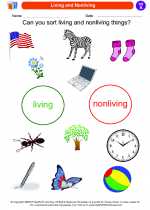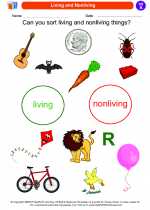Living and Nonliving -> hydration
Hydration
Hydration is the process of providing the body with an adequate amount of water to maintain proper bodily functions. It is essential for overall health and well-being, especially for young children who are still developing. Proper hydration helps in regulating body temperature, transporting nutrients, and lubricating joints.
Why is Hydration Important for Kindergarteners?
Young children are more susceptible to dehydration due to their smaller body size and higher activity levels. They may not always recognize when they are thirsty, making it essential for parents and educators to ensure they are adequately hydrated. Dehydration can lead to fatigue, difficulty concentrating, and even more serious health issues, so it's crucial to teach children the importance of staying hydrated.
How to Stay Hydrated
There are several ways to encourage and promote hydration in kindergarteners:
- Drink plenty of water throughout the day, especially during and after physical activity.
- Eat hydrating foods such as fruits and vegetables, which have high water content.
- Avoid sugary and caffeinated drinks, as they can contribute to dehydration.
- Set a good example by drinking water yourself and making it a part of daily routines.
Study Guide for Hydration
To help kindergarteners understand the importance of hydration, here are some key points to cover:
- What is Hydration?: Explain that hydration means drinking enough water to keep the body healthy and functioning well.
- Why Do We Need to Stay Hydrated?: Discuss the reasons why staying hydrated is important, such as helping the body stay cool, giving us energy, and keeping our muscles working.
- How Can We Stay Hydrated?: Teach children about the different ways to stay hydrated, such as drinking water and eating fruits and vegetables with high water content.
- Signs of Dehydration: Help children recognize the signs of dehydration, such as feeling thirsty, having a dry mouth, or feeling tired and weak.
- Practical Examples: Use real-life examples and activities to demonstrate the importance of hydration, such as bringing a water bottle to school and drinking water during playtime.
By educating kindergarteners about the significance of hydration and promoting healthy habits, we can help them develop a lifelong understanding of the importance of staying hydrated.


